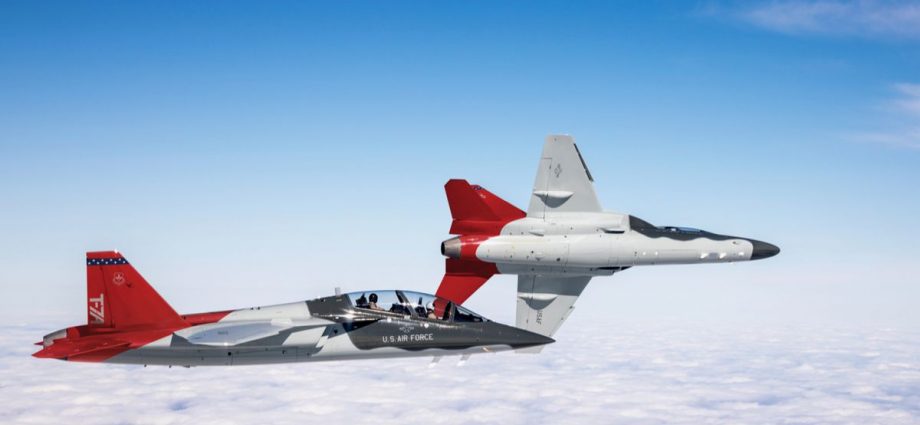The next military revolution is already here, and its called Digital Engineering. Although Digital Engineering cannot strictly be considered as the 4th Revolution in Military Affairs (RMA), and is not even a “what” but a “how”, it is posed to radically change the current defense industry landscape.
Digital Engineering cannot be underestimated in terms of breadth and depth of influence in the coming decade. It will influence the rate at which new products are delivered, emergence of novel products, creation of new defense exporters in non-producer countries, and may even change the balance of global power.
Revolution in Military Affairs
In 1992, the U.S. Defense Department’s Office of Net Assessment published a report on the coming military-technical revolution – what it called the Revolution in Military Affairs. The concept wasn’t a new one. By the 1970s, Soviet military theoreticians were heralding the arrival of what they described as the 20th century’s third wave of the military-technical revolution. The first wave was the motorization of war – namely, the use of aviation and chemical weapons in World War I. As this phase matured in World War II, it came to incorporate the German concept of “blitzkrieg” (armored warfare operations with an air tactical support component), the British-American concept of strategic bombing, and the concept of replacing battleships with onboard aircraft taking off from aircraft carriers, as envisaged by both Japan and the United States.
The second wave came with the development of ballistic missiles and atomic weapons. It matured in the 1970s with the achievement of nuclear balance between the U.S. and the Soviet Union. The third wave of the technical revolution combined reconnaissance and long-range impact into one coherent and comprehensive reconnaissance-strike system that comprised precision ammunition, sensors and long-range radar, a computerized communication system, and situational control.
This year, The Air Force will be holding its first Digital Engineering Pitch Day, seeking industry innovations to improve software, tools, and the fidelity of models used to virtually develop new weapon systems, says Rich Tempalski, the service’s chief modeling, and simulations officer.
“Digital Engineering depends on the creation of nearly perfect virtual and digital models and environments, harnessing their full power to learn and experiment so the actual, physical systems are fully integrated and tested before production,”
AF Pitch Day solicitation industry invite

The Holy Trinity – Agile, Open Source and Digital Engineering
Churning fighter aircraft quickly, within 3 to 5 years, is based on three pillars. The first is agile software development — a practice where programmers quickly write, test and release code, soliciting feedback along the way from users.
Agile software development is an umbrella term for a set of frameworks and practices based on the values and principles expressed in the Manifesto for Agile Software Development and the 12 Principles behind it. One thing that separates Agile from other approaches to software development is the focus on the people doing the work and how they work together. Solutions evolve through collaboration between self-organizing cross-functional teams utilizing the appropriate practices for their context.
The second, open architecture, has long been a buzzword in the defense community, often used to describe a system with plug-and-play hardware.
The final technology, digital engineering, is the most nascent and possibly the most revolutionary. While aerospace engineers have used computers for decades to aid in the creation of aircraft, only recently have defense companies developed 3D-modeling tools that can model an entire life cycle — design, production and sustainment — with a high level of accuracy and fidelity. The process would allow companies to not only map out an aircraft in extreme detail, but also model how a production line would work using different levels of manning or how maintainers would carry out repairs at a depot.
“You could start learning so much before you ever bent the first piece of metal and turned the first wrench, so that when you did do it for the first time, you already have learned. You’re already up to a level of proficiency that in the past you would have to be in the 100th aircraft to have,” he said. “And then if you kept going and you modeled the maintenance, then you could go after the part of the life cycle that constitutes the 70 percent of what we pay.”
Dr. Will Roper, Assistant Secretary of the Air Force for Acquisition
eCreate Before You Aviate
The opportunity to design, build, and test countless designs before building the physical system. Rather than “fly before you buy,” digital engineering and management allows the AF to reduce the real-world learning curve, the need for physical prototyping, and modifications between production blocks.
Boeing’s T-7A Red Hawk was purpose-built to include provisions for growth, improve supportability and innovate a maintenance-friendly design. The aircraft was built with digital engineering processes, agile software development and an open architecture mission system to enable more rapid, affordable future aircraft development. These modern, computer-driven manufacturing techniques serve as an enabler for the U.S. Air Force’s Digital Century Series strategy while additionally increasing the supply base choices.
The T-7A went from concept to first flight in three years as a result of a “breaking the norm” paradigm that includes a modular design of the aircraft developed specifically for maintainers, highly immersive training and offloading of skills and advanced fighter-like performance features that are commensurate with today’s 4th and 5th-gen fighter aircraft.
Ground-Based Training Systems (GBTS), encompassing a full range of physical devices and instructional techniques, will prepare students for and supplement training conducted in the T-7A. The aircraft is a flexible, modifiable solution that adapts easily to people, software and systems so future technologies can be easily implemented, pilots can adjust to their personal preferences and the entire system can be applied to other missions. By adapting to changing technologies and learning methods, and by downloading more expensive training, the T-7A produces better prepared pilots in less time.
The T-7A’s design includes provisions for growth as requirements evolve for additional missions such as an aggressor, light attack / fighter variant.
Compared to traditional aircraft development programs, T-7A experienced:
- A 75% increase improvement in first-time engineering quality
- An 80% reduction in assembly hours
- A 50% reduction in software development and verification time
The Next Generation Fighter Jet
The U.S. Air Force has secretly designed, built and flown at least one prototype of its enigmatic next-generation fighter jet, the service’s top acquisition official confirmed to Defense News on Sept. 14.
Almost every detail about the aircraft itself will remain a mystery due to the classification of the Next Generation Air Dominance program, the Air Force’s effort for fielding a family of connected air warfare systems that could include fighters, drones and other networked platforms in space or the cyber realm.
“We’re going after the most complicated systems that have ever been built, and checked all the boxes with this digital technology. In fact, [we’ve] not just checked the boxes, [we’ve] demonstrated something that’s truly magical.”
Dr. Will Roper, Assistant Secretary of the Air Force for Acquisition
Sources: Defense News, Boeing


Comments are closed, but trackbacks and pingbacks are open.